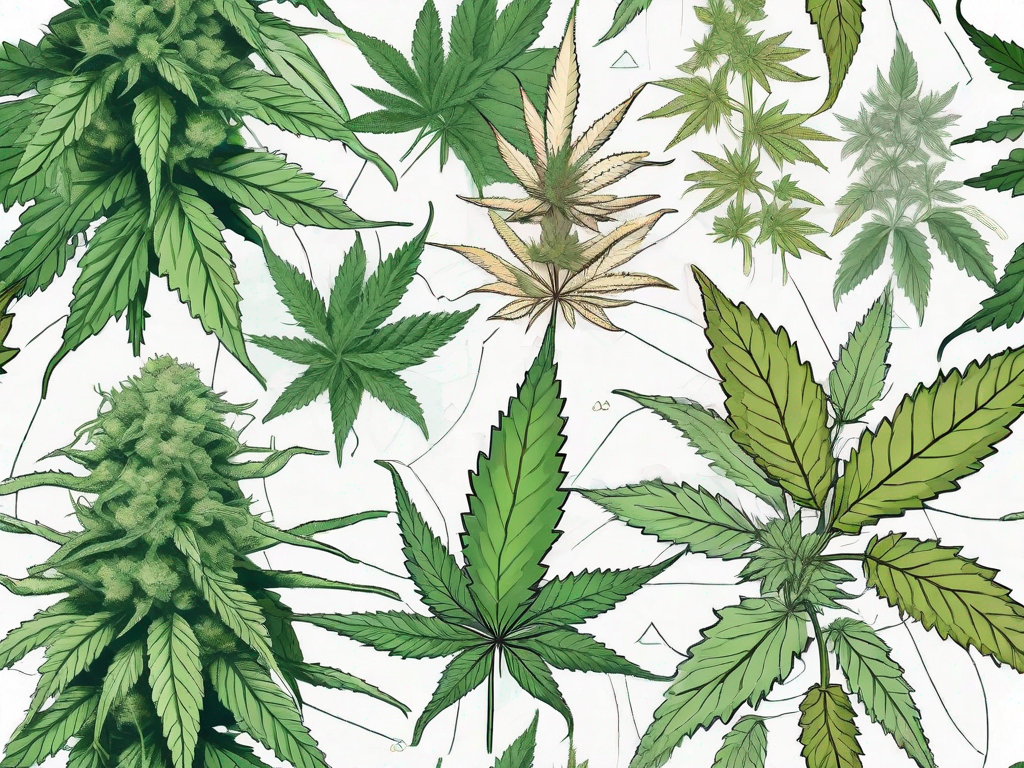Decoding THC Levels in Cannabis: Understanding Potency and Effects

Decoding THC Levels in Cannabis: Understanding Potency and Effects
The world of cannabis can be a complex and confusing place, especially when it comes to understanding the potency and effects of different strains. One of the key factors that determines these characteristics is the level of Tetrahydrocannabinol (THC), the primary psychoactive compound found in cannabis. But what exactly is THC, and how does it affect the user's experience? Let's dive in and decode the mysteries of THC levels in cannabis.
What is THC?
Tetrahydrocannabinol, or THC, is one of the many cannabinoids found in the cannabis plant. It's the compound responsible for the plant's psychoactive effects, which can range from feelings of euphoria and relaxation to heightened sensory perception and altered time perception. The amount of THC in a particular strain of cannabis can greatly influence the intensity of these effects.
THC works by binding to cannabinoid receptors in the brain, which are part of the body's endocannabinoid system. This system plays a role in a variety of physiological processes, including mood, memory, pain sensation, and appetite. When THC binds to these receptors, it triggers a series of reactions that lead to the psychoactive effects associated with cannabis use.
Measuring THC Levels in Cannabis
THC levels in cannabis are typically measured as a percentage of the plant's dry weight. For example, if a strain of cannabis has a THC level of 15%, this means that 15% of the plant's dry weight is made up of THC. This measurement is often used as a rough indicator of the strain's potency, although it's important to note that other factors can also influence the effects of cannabis, including the presence of other cannabinoids and terpenes.
THC levels can vary widely between different strains of cannabis. Some strains have THC levels as low as 0.3%, while others can have levels as high as 30%. The average THC level for cannabis sold in dispensaries is typically around 15-20%.
Factors Influencing THC Levels
Several factors can influence the THC levels in a cannabis plant. These include the plant's genetics, the growing conditions, and the harvesting and curing process. For example, certain strains of cannabis are genetically predisposed to produce higher levels of THC. Similarly, growing conditions such as light, temperature, and nutrient levels can all impact the plant's THC production.
The harvesting and curing process can also affect THC levels. If the plant is harvested too early or too late, this can result in lower THC levels. Similarly, if the plant is not properly cured, this can also impact the THC content.
Understanding the Effects of THC
The effects of THC can vary widely depending on the individual and the amount consumed. In general, higher levels of THC are associated with more intense psychoactive effects. However, it's important to note that the relationship between THC levels and effects is not linear. For example, consuming a small amount of a high-THC strain may not necessarily result in stronger effects than consuming a larger amount of a low-THC strain.
Some of the common effects of THC include feelings of euphoria, relaxation, heightened sensory perception, altered time perception, and increased appetite. However, THC can also have negative effects, especially at higher doses. These can include feelings of anxiety, paranoia, and cognitive impairment.
Individual Tolerance and Sensitivity
Individual tolerance and sensitivity to THC can also play a big role in determining the effects of cannabis. For example, someone who uses cannabis regularly may develop a tolerance to THC, meaning they need to consume more to achieve the same effects. Similarly, some individuals may be more sensitive to the effects of THC and may experience stronger effects even at lower doses.
Genetics can also influence an individual's response to THC. For example, some people may have a genetic predisposition to experience anxiety or paranoia when consuming cannabis, while others may be more likely to experience positive effects such as euphoria and relaxation.
Choosing the Right THC Level for You
Choosing the right THC level for you can be a bit of a balancing act. On one hand, you want to choose a strain that will provide the desired effects. On the other hand, you want to avoid consuming too much THC, as this can lead to unpleasant side effects.
As a general rule, beginners or those with a low tolerance to THC may want to start with strains that have a lower THC content. This can help to minimize the risk of negative side effects and allow the individual to gradually build up their tolerance. For more experienced users, strains with a higher THC content may be more appropriate.
Ultimately, the best way to determine the right THC level for you is through trial and error. Start with a low dose and gradually increase it until you find the level that provides the desired effects without causing any negative side effects.
Final Thoughts
Understanding THC levels in cannabis can be a complex topic, but it's an important one for anyone who uses cannabis. By understanding how THC works and how it affects the body, you can make more informed decisions about which strains to use and how much to consume.
Remember, everyone's experience with cannabis is unique, and what works for one person may not work for another. Always start with a low dose and gradually increase it until you find the level that works best for you. And most importantly, enjoy your cannabis responsibly and safely.



